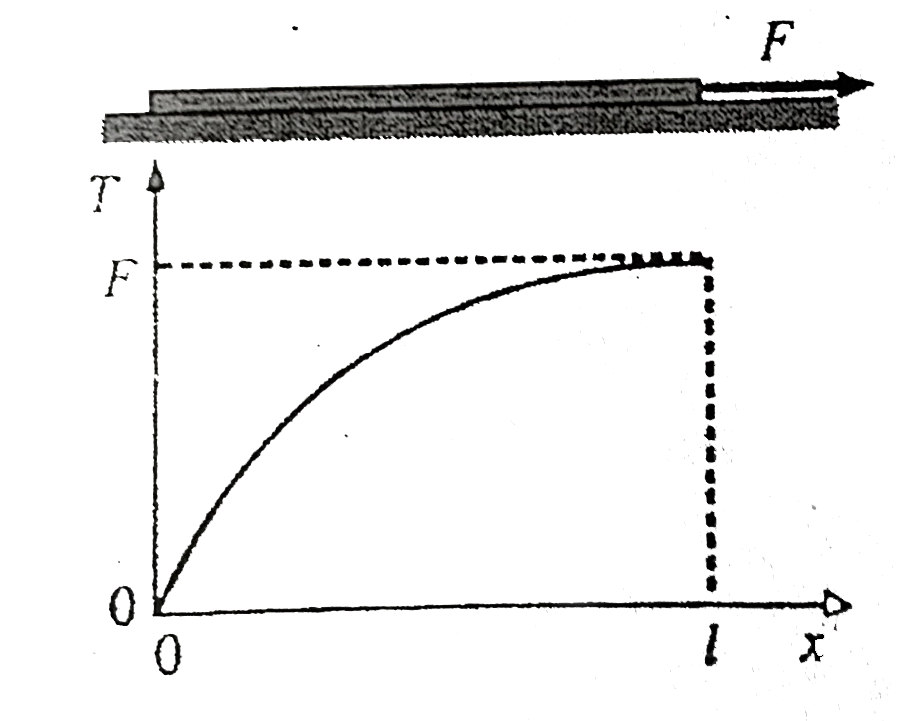Draw the pressure-distance graph of a longitudinal wave. Compare it with the displacement-graph. What can you conclude from the graph ?
Step-by-Step Solution
1. Understanding the Longitudinal Wave:
- A longitudinal wave is characterized by the oscillation of particles in the direction of the wave's propagation. In such waves, regions of compression and rarefaction occur.
2. Setting Up the Graphs:
- For both graphs, the x-axis will represent distance.
- The first graph will be the Pressure-Distance Graph and the second will be the Displacement-Distance Graph.
3. Drawing the Pressure-Distance Graph:
- On the y-axis, label it as "Pressure".
- As the wave travels, when particles are at maximum displacement (either to the left or right), the pressure is at a minimum (rarefaction).
- Conversely, when particles are at their mean position (not displaced), the pressure is at a maximum (compression).
- The graph will show a sinusoidal pattern where the peaks represent maximum pressure (compressions) and the troughs represent minimum pressure (rarefactions).
4. Drawing the Displacement-Distance Graph:
- On the y-axis, label it as "Displacement".
- The displacement graph will also show a sinusoidal pattern, where the peaks represent maximum displacement (either to the left or right) and the zero crossings represent the mean position.
- The displacement will be maximum when the pressure is minimum and vice versa.
5. Comparison of the Graphs:
- Both graphs are sinusoidal but are out of phase with each other.
- When displacement is at its maximum, pressure is at its minimum, and when displacement is zero (mean position), pressure is at its maximum.
- This inverse relationship indicates that as particles move away from their equilibrium position, the pressure in that region decreases.
6. Conclusion:
- From the graphs, we conclude that there is an inverse relationship between pressure and displacement in a longitudinal wave. When the displacement of particles is maximum, the pressure is minimum, and vice versa.
- A longitudinal wave is characterized by the oscillation of particles in the direction of the wave's propagation. In such waves, regions of compression and rarefaction occur.
- For both graphs, the x-axis will represent distance.
- The first graph will be the Pressure-Distance Graph and the second will be the Displacement-Distance Graph.
- On the y-axis, label it as "Pressure".
- As the wave travels, when particles are at maximum displacement (either to the left or right), the pressure is at a minimum (rarefaction).
- Conversely, when particles are at their mean position (not displaced), the pressure is at a maximum (compression).
- The graph will show a sinusoidal pattern where the peaks represent maximum pressure (compressions) and the troughs represent minimum pressure (rarefactions).
- On the y-axis, label it as "Displacement".
- The displacement graph will also show a sinusoidal pattern, where the peaks represent maximum displacement (either to the left or right) and the zero crossings represent the mean position.
- The displacement will be maximum when the pressure is minimum and vice versa.
- Both graphs are sinusoidal but are out of phase with each other.
- When displacement is at its maximum, pressure is at its minimum, and when displacement is zero (mean position), pressure is at its maximum.
- This inverse relationship indicates that as particles move away from their equilibrium position, the pressure in that region decreases.
- From the graphs, we conclude that there is an inverse relationship between pressure and displacement in a longitudinal wave. When the displacement of particles is maximum, the pressure is minimum, and vice versa.
Topper's Solved these Questions
- BOOK - ICSECHAPTER - WAVESEXERCISE - Superposition Of Waves, Beats, Stationary Waves55videos
WAVES
- BOOK - ICSECHAPTER - WAVESEXERCISE - Doppler Effect, Musical, Sound, Noise26videos
WAVES
- BOOK - ICSECHAPTER - WAVESEXERCISE - Long Answer Questions16videos
WAVES
- BOOK - ICSECHAPTER - VECTORS SCALARS ELEMENTARY CALCULUS EXERCISE - UNSOLVED PROBLEMS79videos
VECTORS SCALARS ELEMENTARY CALCULUS
Similar Questions
draw graph of y=2x
View SolutionDraw the velocity-displacement graph of a body executing shm.
View SolutionDraw the displacement-time graph of a longitudial wave. On the diagram mark the region of compression and region of rarefaction.
View SolutionA rope placed straight on a frictionless floor is pulled longitudinally by a force F. Tension force T developed in the rope at a point varies with distance x of the point from the rear end as shown in the graph. What can you certainly conclude about density of the rope?
 View Solution
View SolutionDraw the graphs of the following.
|y|=sinxView SolutionDraw the graphs of the following.
y=[sinx]View SolutionDraw the graphs of the following.
y=|cosx|View SolutionDraw the graphs of the following.
y=[cosx]View SolutionDraw the graph of y=|logx|.
View SolutionDraw a displacement-distance graph of a wave and mark on it, the amplitude of wave by the letter a and wavelength of wave by the letter λ
View Solution

